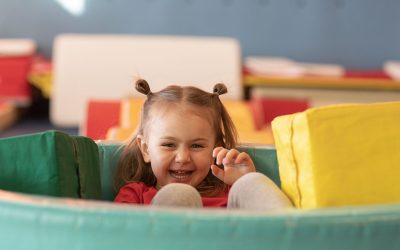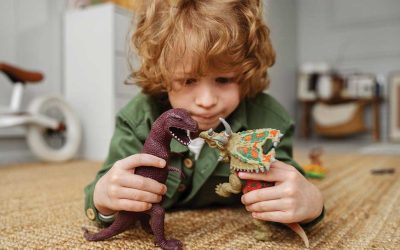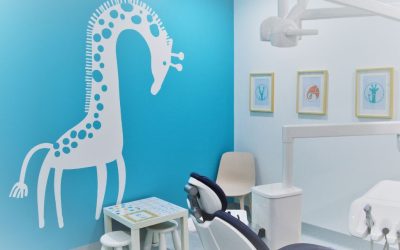The Shapland family has been teaching Queensland kids to swim for more than 80 years. What is it about the unique learn-to-swim program at Shapland Swim Schools that has proved so successful over the years?
Starting from just one pool in Toowoomba in 1938, Shapland Swim School today has 15 centres across south-east Queensland — Brisbane, Ipswich, Sunshine Coast, Gold Coast — and one in Victoria. All offer the unique Shapland learn-to-swim program.
Leading the third generation of swim teachers is operations manager Chris Shapland. He says although the style of teaching might appear less structured than other swim schools, an incredible amount of development and testing has gone into refining Shapland’s learn-to-swim program.
“The bigger swim schools use what’s called station teaching. Where an instructor will stand in the one spot and they will teach one skill to the group of children. They have a list of skills to teach and a fixed dialogue to achieve that, and they do it until a child in the group succeeds, then tick it off and onto the next one,” Mr Shapland says.
“In our unique Swim in Five system, our teachers are trained to apply our process, which is applicable whether you’re a baby or an adult. Teachers need to be flexible in how they teach swimming, as the same principles are applicable to every standard and situation.
“We ensure our teachers are all highly trained in this process. Then they have the freedom to interpret and teach in a way that suits them and the child.”
Mr Shapland says not having those restrictions means the swim school’s teachers are happier and are more satisfied with their job.
“If a child is stuck on something, the teacher has a lot of flexibility as to how to get past it. I always tell them, ‘If you get stuck, invent a game that teaches the skill’. Children love to play games in the water. That’s what makes us very different.”
How the Shapland program works
At the core of the Shapland learn-to-swim program are five skill levels. All revolve around gravity, or more importantly, the removal of gravity.
“Back when we first started in 1938, we only ever had two levels of swimmers. There were those who knew the water would hold them up, in other words those who could float, and those who couldn’t,” Mr Shapland says.
“The ones who couldn’t float, we showed them how to float on top of the water and how the water always supports their body weight.”
He says those who know how to float are taught to hold water with their hands and feet, so they can start driving a forward motion.
“Teach someone how to lie on top of the water and relax. Don’t be afraid. You won’t fall. It’s really very simple.”
The learn-to-swim environment matters too
Another thing Chris Shapland believes really helps kids learn to swim is the varying depth of the pool.
“I attribute this to my dad — we have one of the very rare specialised teaching pools in the industry. The depths are critical,” he says.
“We use these different depths of water to gradually introduce your child to how their body reacts when those gravitational forces are reduced and/or removed.”
The quality of the pool water is also an important consideration and something a parent needs to consider. When it comes to pool water, Chris Shapland believes the magna mineral water they use in Shapland pools is the ultimate ‘healthy water’.
“This water has been used for its healing qualities for centuries, and instead of your standard salt or chlorine pool, it’s a blend of magnesium and potassium chloride.”

Class size helps children succeed
When kids are learning to swim, class size is critical.
“We’ve trialled many class sizes and found a class of three is the most successful for a child to learn their aquatic skills,” he says.
“It allows each child to receive more individual attention and accelerates their learning.”
He says children spend more time with the teacher and less time waiting for their turn.
It’s also common for children to be easily disrupted. It’s why Shapland Swim Schools also focus on the overall ambience when teaching kids to swim.
“We all know how easily children become distracted or disturbed by too much noise, so a calm environment is crucial too,” Mr Shapland says. “We only ever have two classes in the pool at a time.”
Another critical learn-to-swim skill
As a renowned swimming coach with more than 50 years’ experience teaching children how to swim, Chris Shapland believes learning to swim without goggles on is one of the most important steps for kids.
“A fundamental skill is how they react if they fall into water, and they probably won’t be wearing goggles if that happens,” he says.
“Children will likely panic when they hit the water without goggles. This is why swim instructors at Shapland Swim Schools encourage swimmers to practise water safety skills without goggles.”
He says if a child can fall into water, float and get to the side of the pool, without goggles, they are more likely to be able to survive an accidental fall into the water.
Worldwide, children under five years remain the age group at highest risk of unintentional fatal drowning. Between 2002 and 2018, Queensland recorded the highest number of drowning deaths among children aged zero to four in Australia.
The most common place for drowning deaths among young children in Australia is in a swimming pool. Bathtubs ranked second most common.
What kids should learn at swimming lessons
During swimming lessons kids will gain essential water safety skills to help prevent accidents. They will also develop:
- self-confidence, as they build their skills and improve technique
- coordination and breathing techniques
- skills to build upon to potentially start swimming as a sport or hobby
- a sense of fun. Most children love swimming lessons!
Shapland Swim School locations in Queensland
- Alexandra Hills, 73 Lyndon Road, Alexandra Hills Qld 4161. Phone: 07 3206 1622
- Buderim, 93 Jingellic Drive, Buderim Qld 4556. Phone: 07 5476 8066
- Carindale, 250 Scrub Road, Carindale Qld 4152. Phone: 07 3843 4388
- Everton Park, 184 Old Northern Road, Everton Park Qld 4053. Phone: 07 3353 3016
- Gaven / Pacific Pines, 23 Glade Drive, Gaven Qld 4211. Phone: 07 5502 3066
- Ipswich, 23 Cambridge Street, Silkstone Qld 4304. Phone: 07 3812 7712
- Kallangur, 50 Goodfellows Road, Kallangur Qld 4503. Phone: 07 3886 0446
- Logan Reserve, 197-201 School Road, Logan Reserve Qld 4133. Phone: 07 3803 6714
- Moorooka, 31 Anson Street, Moorooka Qld 4105. Phone: 07 3848 2777
- Morayfield, 46 Grant Road, Morayfield Qld 4510. Phone: 07 5498 3838
- Sinnamon Park, 1-3 McPherson Road, Sinnamon Park Qld 4073. Phone: 07 3279 7088
- Stretton, 596 Gowan Road, Stretton Qld 4116. Phone: 07 3272 4132
- Taigum, 189 Beams Road, Taigum Qld 4017. Phone: 07 3265 4225
- Warner, 300 Samsonvale Road, Warner Qld 4500. Phone: 07 3882 4816





